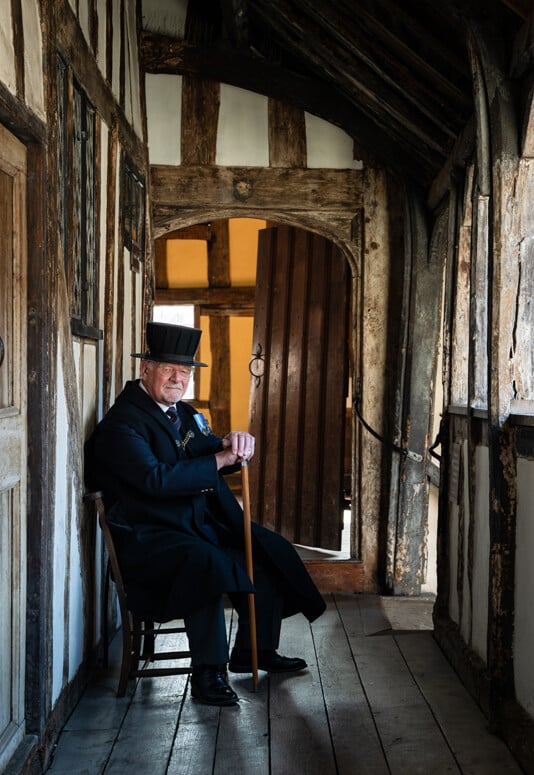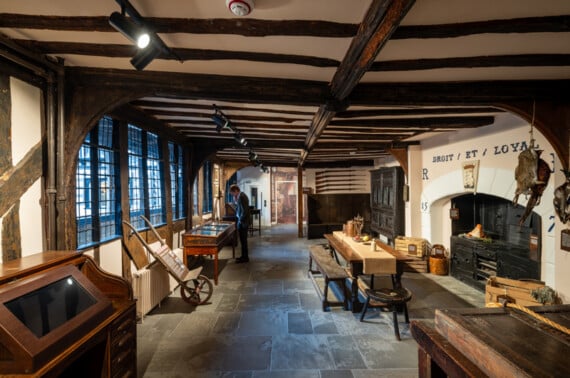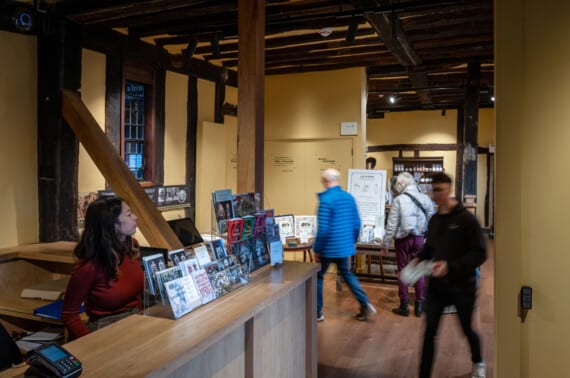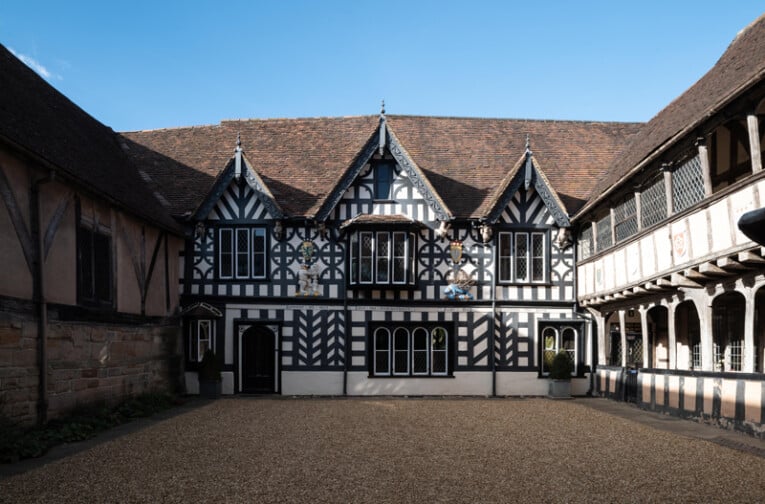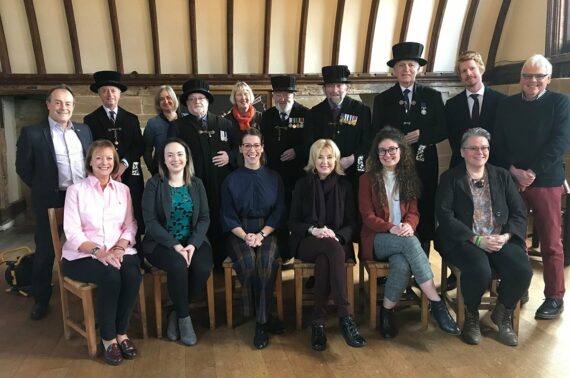Lord Leycester Hospital
Warwick
One of the country’s most significant medieval sites reopened to the public in mid-2023 following a £4.5m, 18-month conservation project. The Lord Leycester has since welcomed over 10,000 people who have enjoyed previously inaccessible parts of the 700-year-old buildings, the café-shop, and a revamped visitor experience.
The Grade I-listed, medieval timber-framed buildings are located within the Warwick Conservation Area. They represent some of the most significant European timber structures of their time, comprising three halls, a chapel dating originally from 1126 – rebuilt in the late 1380s and restored in 1860 by George Gilbert Scot – an inn with high-status early 17th-century accommodation, together with a Guild Hall (1450) and a cross-wing house.
The conservation approach has been pragmatic with each repair undertaken appropriately according to its context, rather than dogmatically. Key areas of work on the NLHF-funded project include the restoration of the fabric of the mediaeval architecture and the renewal of the almshouse comprising the veterans’ homes. The project has seen The Master’s House and the Medieval wall at the Lord Leycester opened to visitors for the first time in its history, with an overall 23% increase in how much of the historic site’s areas are accessible to the public.
The improvements also saw the creation of new exhibition areas and an enlarged visitor attraction area including a new reception, gift shop and a café located in the Great Hall, as well as external repairs of the almshouse that form the homes of the Brethren who currently live at the Lord Leycester.
The intricate and sensitive upgrade works and subsequent increased footfall means the Lord Leycester had a better chance of securing its future for many years to come, allowing it to maintain a centuries-old tradition of hospitality, service and support for its Brethren.
